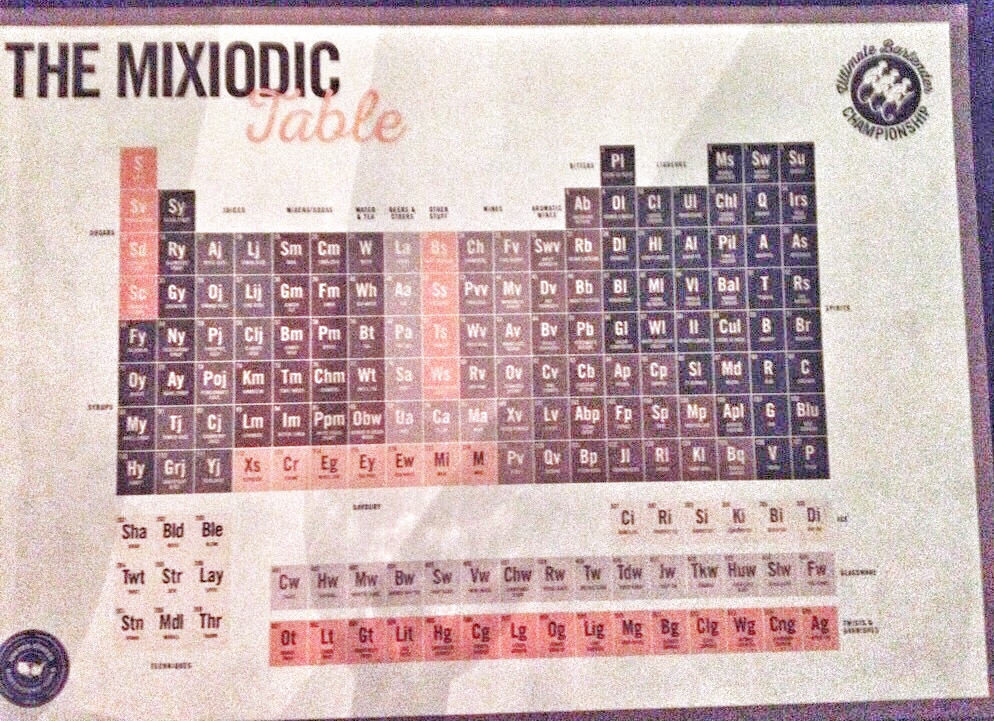Skilled bartending has become an intriguing, flashy trend, inspiring a plethora of competitions all over the world. From dazzling bar flare to unique cocktail recipes and speed bartending, these events are catching people’s eye and developing a strong following. But in this world of colorful drinks and innovative mixology, the art of basic service technique and bar knowledge falls by the wayside.
Together, Monkey Shoulder and the United States Bartender’s Guild (USBG) have created an innovative international competition that refocuses the art of bartending by challenging competitors to demonstrate their knowledge and service rather than just their flare. Labeled a “no b.s.” competition by the members of the Monkey Shoulder team, the event aimed to focus on “skills that pay the bills,” a no-nonsense, practical take on being a good bartender.
Lead by Dean Callan, Brand Ambassador at Monkey Shoulder, the event has traveled to four other U.S. cities including Milwaukee, Charleston (SC), Chicago and Philadelphia and internationally, in Malaysia, Vietnam, Philippines, Poland, France, Germany, and Singapore. Bartenders from each city took part in the same 7-round competition and the overall point leader at the end of this year’s competition will be crowned the Ultimate Bartending Champion.
On Monday, November 18th, 2015, the Ultimate Bartender Championship came to Denver. Hosted by Punch Bowl, the competition featured 12 local bartenders, competing in 7 different rounds that tested their technique, insight, speed and skill behind the bar.
The Rounds
1. Quiz:
In the quiz round, contenders were read 100 multiple choice questions ranging from an array of bartending topics. From identifying recipe ingredients to naming various countries’ national beverage, Callan rapidly quizzed the opponents to test both their knowledge of beverages and their ability to think quickly on their feet.
2. Mixiodic Table:
For the competition, Callan and the Monkey Shoulder team created an ingenious bartender version of the periodic table. The table consists of various components to cocktail recipes, featuring ‘elements’ like sugars, juices, mixers, bitters, ices, liquors, glassware and garnishes. The goal for this round was to solve ‘equations’ by naming the cocktail. For instance, if Vm=vermouth and V=vodka, Ol=olive juice, Sh=shaken, Up=martini glass then V+Vm+Ol+Sh+Up = A vodka martini. Competitors had 10 minutes to solve 20 equations.
V+Vm+Ol+Sh+Up = A vodka martini
3. Nosing:
In this round, opponents had two minutes to identify ten different spirits in a blind nosing test correctly. 1/2 a point was awarded for knowing the spirit (i.e., vodka, bourbon, scotch, Irish whiskey) and a full point for naming the brand (42 Below vodka, Glenmorangie scotch, etc.).
4. Pouring:
This task included glasses listing specific pour quantities (1/3 oz, 1 oz) and the bartenders needed to measure out the exact pour for each. The goal here was to pour the right amount into each glass and be exact on as many as possible while being as quick and efficient as possible.
5. Tray Service:
This round required competitors to take drink orders for ten people, get the drinks from the bar and, in the correct order, serve the right drinks to each corresponding person. To do this, Callan printed off ten pictures of celebrities and recognizable people to serve as the ten places at the table. By doing this, it required the bartenders to remember who ordered which drink and place each drink down in the correct order (women first, than men). Each opponent had a different arrangement of pictures and needed to adapt to the right order. Again, this pushes the importance of service technique, efficiency and drink knowledge.
6. Stock Take:
A crucial part of being a bartender is inventory. This round featured the skills of taking stock of various liquors as if they were doing inventory. Competitors needed to eyeball measure the amount of liquor in 10 different bottles and output an accurate inventory sheet.
7. Building Challenge:
The final round required the competitors to produce eight cocktails in 5 minutes. These cocktails were taste-tested by the audience. If the audience decided that a cocktail was not adequate, they could send the drink back, therefore, docking points from the bartender. This last round was in place to showcase the skills and mixing techniques of the competitors and tested how they managed their time while optimizing taste and technique.
The competition was a captivating, enjoyable experience that drew a great deal of interest due to its uncommon, practical nature. While the notion of a service knowledge and recipe knowledge-based event may seem pedestrian, Callan and Monkey Shoulder did a phenomenal job with their innovative challenges, unique creations (like the Mixiodic Table) and focused on bartending functionalism and skill. Both competitors and spectators enjoyed this new format, and all benefited from the showcasing of no-nonsense bar knowledge and service technique.
As a member of the food and beverage community, I believe that this innovative, practical-knowledge-based event is exactly what the industry needs. Yes, bar flare is fun and captivating, but the importance of service is what keeps the industry alive. Callan did an extraordinary job of incorporating functional, pragmatic bartending skills into a competitive, unique event. His focus on “skills that pay the bills,” I believe, will inspire more bartenders to pay closer attention to the importance of the basics; knowledge, efficiency, preciseness and good service. I admire Callan’s ingenuity and creativeness in bringing service into the forefront through useful yet fun skill challenges.
While this is the first year of this competition, Callan and Monkey Shoulder look to expand the event throughout the globe, creating new innovative challenges along the way and spreading the focus of service and technique. We can’t wait to see what they have in store for next year and the years to come.
